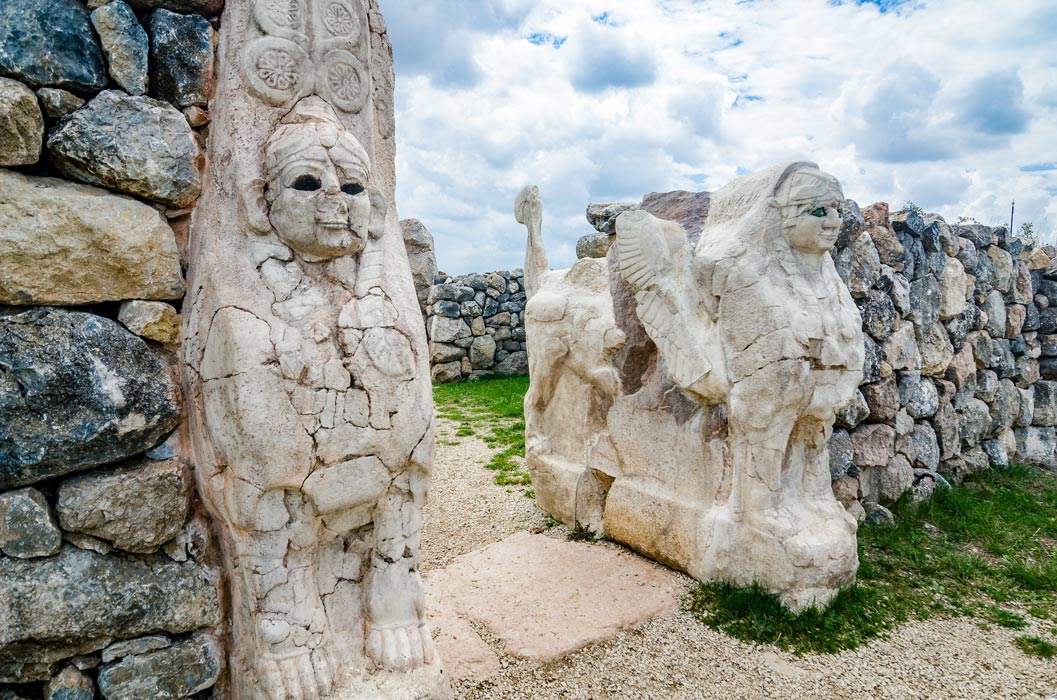 History
HistoryHattusa: City of Thousand Gods
By SU Magazin / 2022-09-30Hattusa, the capital of the once mighty Hittite Civilization is a UNESCO World Heritage Site for its cultural and historical importance since 1986. With its remarkable archeological site, this ancient city is located in the heartland of Anatolia, in the Turkish province of Corum. Hattusa stands out with its city organization, well-preserved archaeological structures, rich ornaments, stonework art, and the knowledge it provided of the Hittite civilization. Hattusa is a fascinating example of a Bronze Age city and its people. To have endured for millennia as it has is a true testament to the might of the Hittites.
History of Hattusa
Evidence of the earliest settlements in Hattusa dates back to the 3rd millennium BC. However, the city appears in the pages of history with the Hittites. Hattusa witnessed the most glorious and powerful times of the Hittite Empire, it was one of the largest centers of the ancient world. It was mentioned as the "city of a thousand gods" in the tables found in the excavations.
Thus far, excavations have found extensive royal archives of clay tablets, known as the Bogazkoy Archive. The tablets feature official correspondence, contracts, legal codes, ceremonial procedures, prophecies, peace settlements, and literature of the time. That helps us to understand the culture and daily life of this ancient civilization. In addition to tablets, a variety of large sculptures and artifacts are brought to light as well.
The city was heavily fortified with a double wall, over 100 towers, and 5 gateways which are including 3 richly decorated: The Lions Gate, The Kings Gate, and The Sphinx Gate. The huge wall was 8km in length and older walls were found in the city dividing it into two districts. Some of the walls of the Upper City feature the longest known Hittite hieroglyphic inscription from the Hittite Empire.

Archaeologists are still working to uncover more about the Hittites and their capital. And considering the vast size of the site, it is almost a certainty for them to do so. These are some of the significant monuments of Hattusa;
The Great Temple
Most of the temples of Hattusa are situated in the Upper City. Upper City mostly consisted of these temples for the gods and goddesses of the Hittite and Hurrian pantheons. This is where the name "City of thousand gods" may come from. Although the best-preserved ruin of a Hittite Temple is located in the Lower City. It is from the 13th century BC known as Great Temple. The foundations and arrangements can still be seen in the area.
Great Gates of Hattusa
The walls and fortifications of Hattusa were impressively massive. The gates of the city matched the city's glory as well. Three gates of Upper City were specially designed with the motifs of lions, sphinxes, and the king. Dating back to the 14th century BC, Lion’s Gate, King’s Gate, and Sphinx Gate are proof of the mastery of stonework in the Hittite Empire.

Green Stone of Hattusa
Touted as a magical, wish stone's history and origin are shrouded in mystery at the great temple.

Yazilikaya Open-Air Temple
The Yazilikaya sanctuary is an open-air temple carved into the bedrock consisting of two rooms, located 2 km north of Hattusa. Featuring gods, goddesses, and the figures of the Great King Tudhaliya IV, the walls of these rooms are filled with the richest and most striking examples of Hittite stonework. It is a must-visit site that provides a magical atmosphere of the Hittite Civilization.